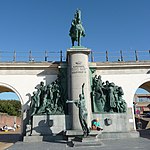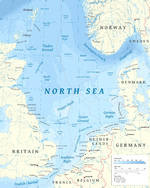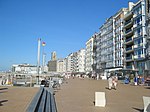Royal Galleries of Ostend
1906 establishments in BelgiumBuildings and structures completed in 1906Buildings and structures in West FlandersLeopold II of Belgium

The Royal Galleries of Ostend (Dutch: Koninklijke Gaanderijen) are a seaside neoclassical arcade on a dike on the beach of Ostend, Belgium. They extend from the royal villa in the east to the Hippodrome Wellington horse racing track in the west. The galleries are over 380 metres (1,250 ft) long, with a large pavilion at each end. The luxury Thermae Palace Hotel sits atop the central section.
Excerpt from the Wikipedia article Royal Galleries of Ostend (License: CC BY-SA 3.0, Authors, Images).Royal Galleries of Ostend
Koningin Astridlaan, Ostend
Geographical coordinates (GPS) Address Nearby Places Show on map
Geographical coordinates (GPS)
| Latitude | Longitude |
|---|---|
| N 51.226111111111 ° | E 2.9022222222222 ° |
Address
Koningin Astridlaan 7
8400 Ostend (Ostend)
West Flanders, Belgium
Open on Google Maps








